Red light torches are a key part of any astronomer’s toolkit, helping to preserve dark adaptation while still letting you see once the Sun goes down.
There are many handheld red light torches, but sometimes when stargazing you really need to keep your hands free so you can set up your telescope or handle delicate equipment.
Fortunately, there are plenty of red light head torches on offer, which mount a lightweight lamp directly on your head, meaning you can shine light wherever you look while also keeping your hands free.
Most come with a white light option for when you need to navigate your way to an observing site, or if you need more clarity when setting up, but for most stargazers, it’s the red light mode that helps to maintain their dark adaptation through the night.
What is darkness adaptation?
Human eyes have two kinds of cells – rods and cones.
Cones are largely responsible for differentiating colours, but require high light levels to function.
Rods work much better in low light, but can’t determine colour very well, which is why colours seem muted in low light.
They are also found on the outer regions of our retinas which is why averted vision helps when viewing dim objects.
Our eyes release a chemical called rhodopsin, which is a photopigment that is extremely sensitive to light and helps boost rod cells vision.
It takes around 30 minutes for rhodopsin to build up in your eyes and fully adapt from bright light to darkness, at which point you will be able to see far more fainter stars, galaxies and nebulae than you could just after your turned off the light.
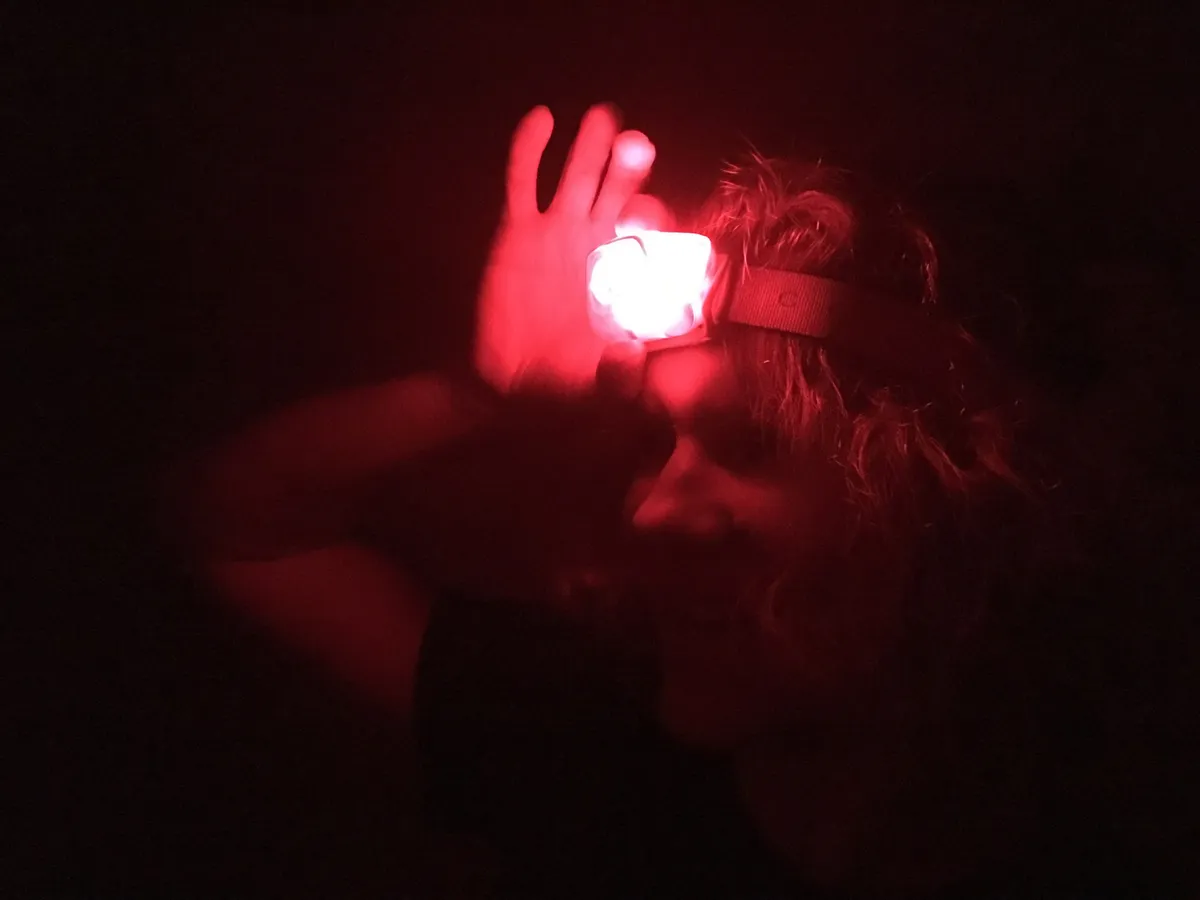
Why does red light help with dark adaptation?
Though it takes 30 minutes for rhodopsin to dark adapt our eyes, it is almost instantly destroyed by white light.
Even a momentary exposure can undo your hard won dark adaptation, forcing you to take another half hour out of your observing time while your eyes re-adapt.
Red light, however, doesn’t affect rhodopsin, meaning you can use it to see while still maintaining your dark adaptation.
However, red light will only show up red colours in the world, meaning that yellows and whites will show up as red, while blues become black.
Most star charts, including the monthly pull out Sky Guide in every issue of BBC Sky at Night Magazine, are specifically created to be readable under red light, but you'll want to bear that in mind if you're bringing any other documents with you.
Best red light head torches for stargazing
Nitecore NU25 head torch
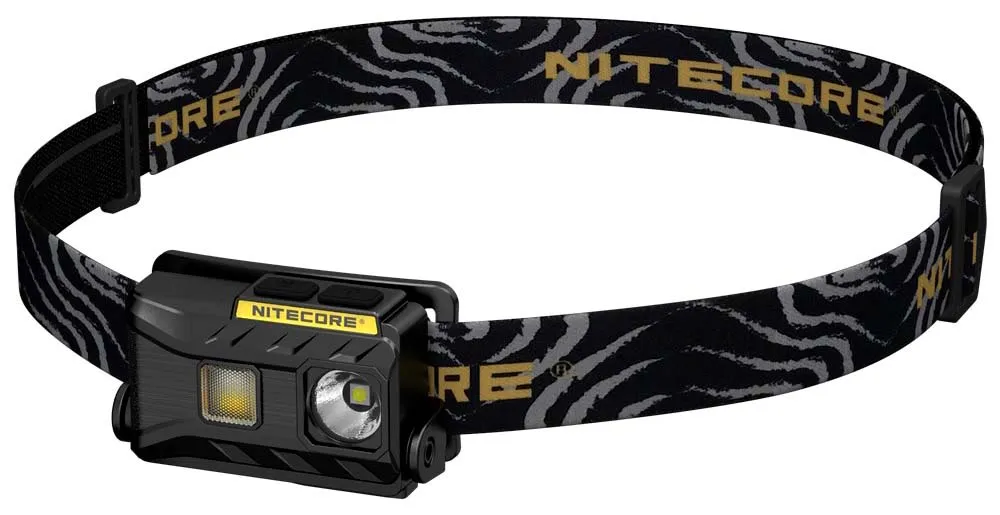
The Nitecore NU25 is a rechargeable head torch with a red light comes with both high and low brightness modes, making it great for stargazing where you want as little light as possible to maintain your night vision.
On low light mode, the red light LED can run for 68 hours on one charge, or on the high brightness setting for 7 hours 45 minutes.
The large clear buttons make it easy to turn on and off even while wearing gloves, while subtly flashing lights will tell you when the inbuilt rechargeable battery is running low.
When using the main light there are four white light modes – low, mid, high and a 360 lumens turbo setting, while an an auxiliary white light can be used for short range tasks like reading.
The beam covers a 100º arc, and can be tilted back and forth by up to 60º to let you concentrate the light where it’s most needed.
SQUIRREL_13053186
Orion RedBeam LED motion sensing headlamp
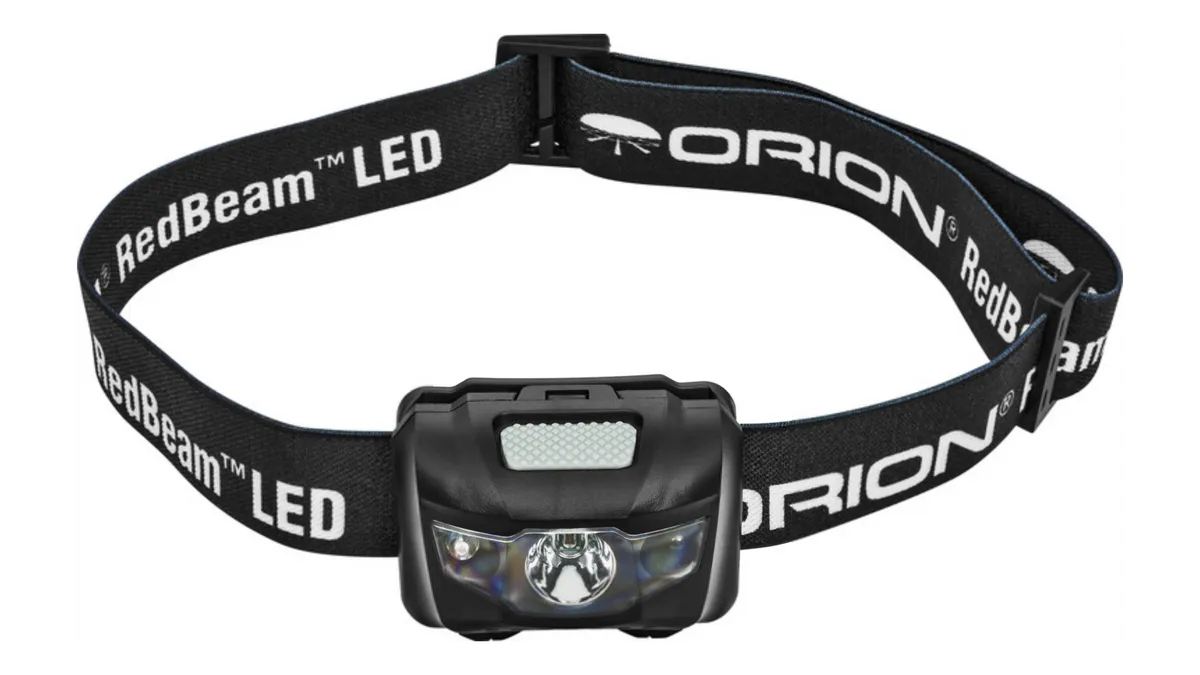
- Buy now from Orion.
Unlike most other red light torches, Orion’s RedBeam is made specifically for astronomy and so doesn’t have a white light setting – no chance of accidentally destroying your dark adaptation here!
The red LED light can be set to four brightness modes – 100%, 50%, 10% and 5% – allowing you to adjust to your specific night time needs.
The motion sensor means it can be used hands free by waving your hand 4-inches in front of the sensor meaning no more fumbling while you’re wearing gloves.
Angling the torch means you can just illuminate the task you're focusing on, or have it pointed straight out to see the general area.
The torch is powered by three AAA batteries, so can't be easily recharged, and is mounted on an adjustable elasticated band for a snug fit.
Black Diamond Spot 350 headlamp
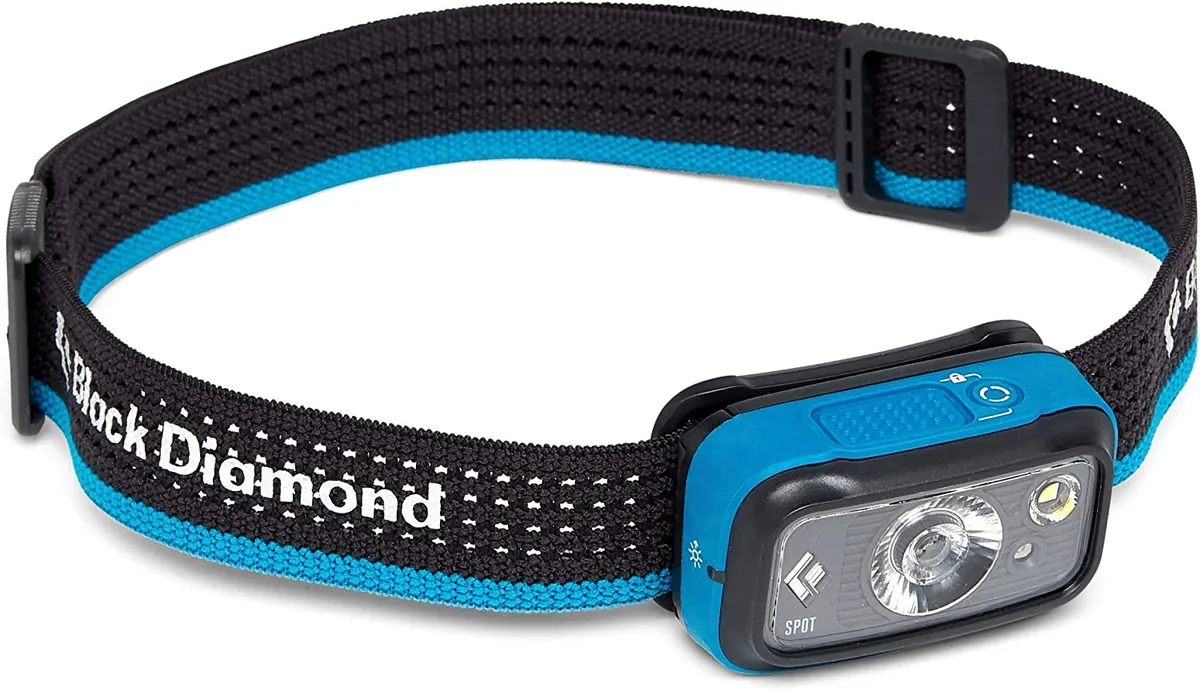
SQUIRREL_TEXT_13053187
The Black Diamond Spot 350 head torch has a sleek and low profile design, which prevents the light tipping forward or bouncing when moving.
The red light torch helps you maintain your night vision, while the main white light comes with bright distance mode, a dim setting and strobe (which is mainly used for signaling an emergency).
The Brightness Memory function means you can turn your headlamp on and off while maintaining the same settings, so you can toggle the red light without worrying about turning on the main torch.
Fenix HM70R headlamp
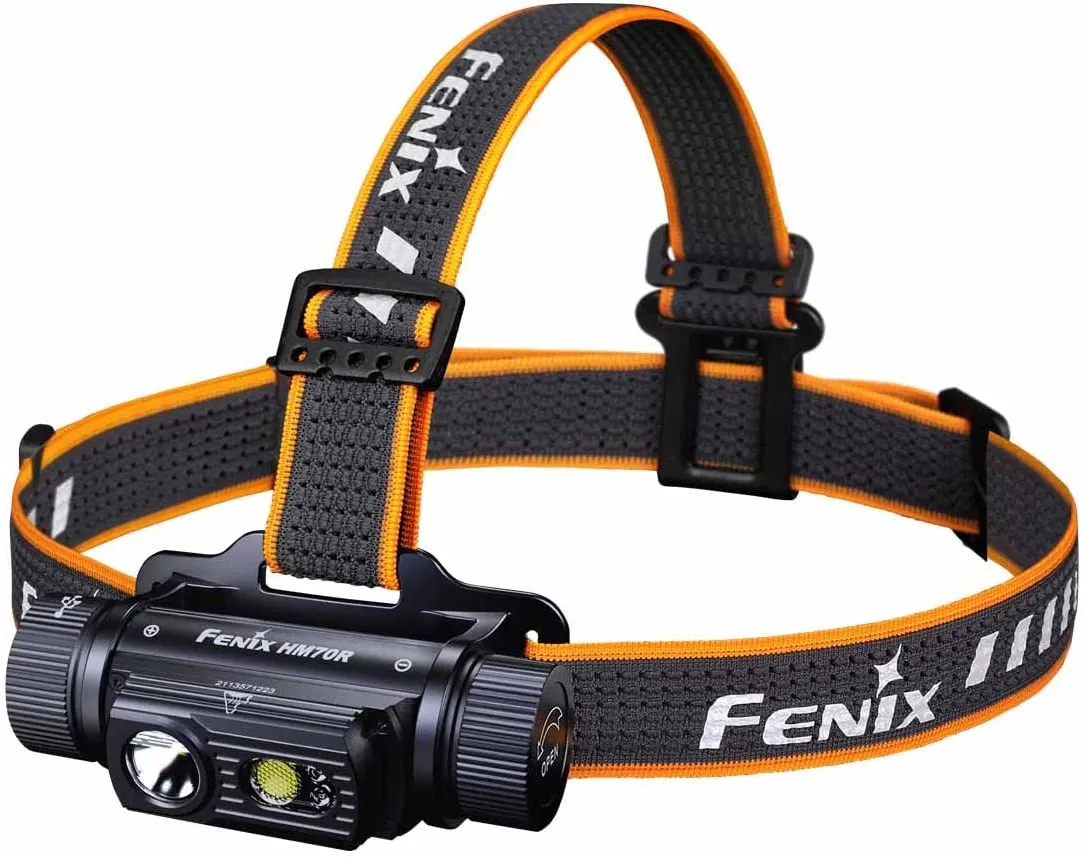
If you’re wondering "What is the most powerful headtorch?", then the Fenix HM70R might be the one for you, the main white light is an extraordinarily bright 1600 lumen LED that can project out to 186m.
For when you’re trying to maintain your dark vision however, there are an additional 500, 150 and 30 lumen settings as well as the 5 lumen red light mode (though the memory function means you can turn the torch on and off without worrying about accidentally blinding yourself).
As the headlamp is a relatively weighty 200g, there is a secondary strap running across the top of your head helping to keep it in place.
If this proves insufficient to keep the torch on your head, however, there's no need to worry – the headlamp has been impact tested up to 2m, meaning it will be fine even if you do drop or knock it.
The large capacity battery can be charged via USB-C, and power the red light for up to 400 hours.
Ledlenser MH7 LED head torch
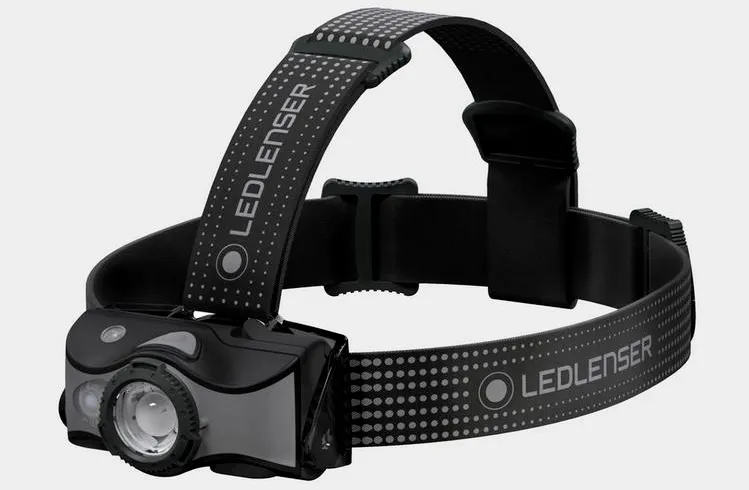
Get the best of both worlds with the Ledlenser MH7, which can be powered either with the rechargeable lithium ion battery, or using two AA batteries - a great back up in case of emergencies (or you just always forget your charger).
The 600 lumen main white light is bright enough to navigate by, and you can easily switch to the red light by holding down the button for 3 seconds.
Has a constant light mode and an energy saving mode where the light flashes on and off faster than the eye can see, which extends the battery time but can cause eye fatigue.
Has a battery indicator warning you you'll need to charge, and the white light will blink when the battery is about to run out, giving you time to find your charger or batteries before the light turns off.
Petzl Tactikka RGB headlamp

As well as the standard white LED torch, this Petzl head torch comes with not one, but three coloured modes - red, green and blue.
Through red light is the best for maintaining dark adaptation, green light still breaks down rhodopsin significantly slower than white light.
Its main advantage, however, is that things appear much brighter under green light, as our eyes are naturally more sensitive to it. Green would be a good option for when your setting up equipment, then switch to red when looking for the faint lights of distant objects.
The blue light is the worst at maintaining dark adaptation (though still better than white light) and causes eye strain in most people, so probably won't be of much use to astronomers. It can be useful for cutting through fog if the weather closes in, however, as well as luring fish if you're also planning on doing some angling during your trip.
You can cycle through all three colours using a single button.
The hybrid design means you can either use three AAA batteries or buy a rechargeable power pack (sold separately) that will support the 2 lumen red light mode for up to 60 hours.
The head band is removable, allowing you to wash it between observing sessions.
Klarus HC3 clip-on head torch
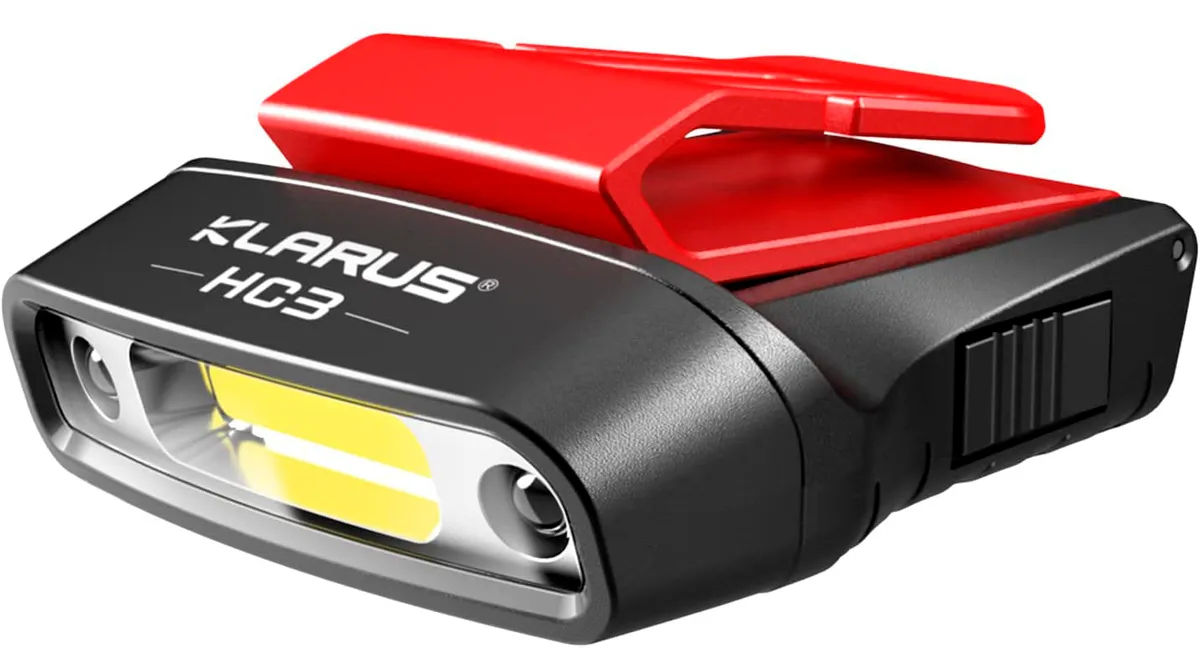
Rather than using the traditional headband to keep itself in place, this head torch clips directly onto the brim of a peaked hat.
Alternately you can use it as a stationary lamp by attaching it to a tent pole, tripod or edge of your book.
Weighing just 37g, it won’t overbalance your cap, and it can be tilted up and down by 180º allowing you to position it no matter how you attach it.
You can either use the button to turn the torch on and off, or set it to motion sensing mode where waving your hand in front of the torch turns it on and off.
The red light mode has two brightness settings, helping you to maintain your dark adaptation while out stargazing.
